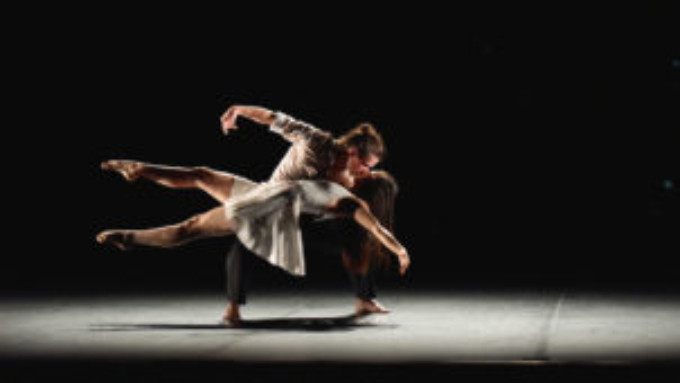Review: BALLET PRELJOCAJ at Power Center For The Performing Arts

From the moment the dancers in the contemporary dance group, Ballet Preljocaj walked onto the stage, they managed to hold the audience in their grasp. Executing a combination of flawless moves founded in classical ballet, yet infused with athleticism and stark, modern moves, it was a captivating performance. Angelin Preljocaj founded Ballet Preljocaj in 1984; since 1996 the company has been based in Aix-en-Provence, France. The troupe members are a melting pot, hailing from such countries as Russia, Albania, Italy, and Australia. On March 26th, they performed for the fourth time in Ann Arbor, Michigan as part of The University Musical Society's winter season.
They performed: La Fresque from the Traditional Chinese tale, "The Painting on the Wall." The plot focuses on what can ensue when a young traveler named Chu becomes entranced by a girl in a painting. As he enters the world behind the painting, a series of various dances unfold, blurring the line between reality and imagination.
The dancers have clearly been well trained in classical ballet, as evidenced from their magnificent jumps, turns, and extensions. Nearly every movement has at its root a traditional ballet step, yet Angelin Preljocaj's choreography constantly surprises with his own unique modern twists. An example of this is the contrast between stillness that we see as the five women in the painting pose, then immediately begin bobbing their heads up and down while sitting, their waist-length hair spinning around them. Verity Jacobsen, who plays the young woman, provides an ideal focal point, her long, sinewy frame smoothly transitioning between a breathtaking pas de deux, then dances with the other women in the painting and male dancers as well. She fills the entire stage in a solo where she is given the chance to shine.
The scenery, though primitive, is extremely innovative and adds to the excitement. At one point, there is a backdrop that looks like strands of hair. A contemporary pas de deux between the character of Chu and the woman he is wooing is made even more stunning by a backdrop of a star-filled sky. The two move like sea creatures in the night, morphing into a variety of breathtaking shapes.
But this group is above all an ensemble -- so much so that the program identifies each person as a "dancer" and doesn't even indicate which ones are playing the principal parts. The performance comes alive when they are all together. The first time we see them all onstage, it's as if they're meeting at a festival for the first time. The energy is magnetic as they bounce and sway, accompanied by music with a staccato beat, with all their movements in unison. They're clearly displaying the joy of dancing and movement, and it's terrific to watch.
One of my favorite dances was when the young women, in simple but vibrant dresses in hues of red, green, blue and black, dance around Jacobsen, each taking a strand of her hair as if she's a maypole. First, they cover her face entirely with her own hair and then roll it into a neat bun on the top of her head. It was clearly an unusual type of scene but engaging nonetheless.
In some of the dances, the repetitive movements go on for quite some time, which can get a bit monotonous. I was eager for a change, either in scene or movement.
The absolute highlight for me was a scene towards the very end where long black ropes hung from the ceiling. The women, looking like sylph-like sea creatures, spun around on the ropes, as did the men, who were suspended upside down, treating the audience to a version of a breathtaking circus performance.
All of the dancers were fully invested, conveying passion and sincerity in their roles throughout the one hour and 20-minute performance that was uninterrupted by an intermission.
As the male traveler exited the painting and the curtain came down to end the piece, there were shouts and a lengthy standing ovation from the audience. That enthusiasm was well earned by an extremely entertaining evening of dance.
Reader Reviews
Videos

